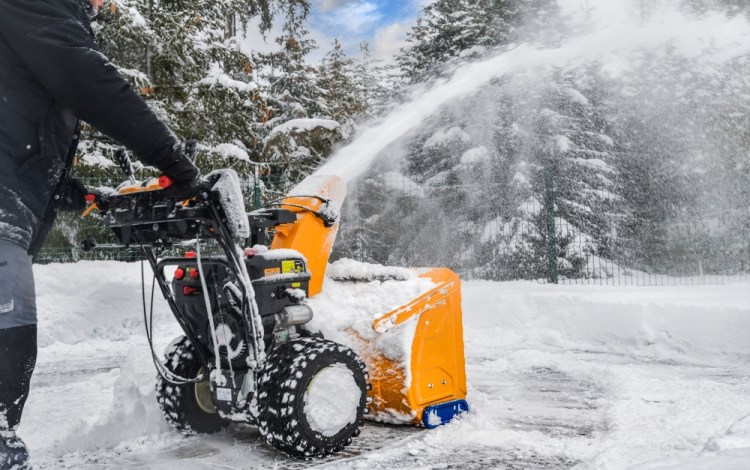Depending on where you live, a snowblower can be a luxury or a necessity—both for the volume of snow that falls and to help you safely clear it. While a light clearing likely won’t hurt, the American Heart Association has identified heavy snow shoveling as a risk factor for heart attacks.
Deciding if you need one is your first decision. Plus, choosing which one to purchase can be daunting. To help you decide, we’ve provided some questions to ask yourself and information about which key features to research before shopping for the best models available at your local or online retailers.
Do You Need a Snowblower?
Start by asking yourself the questions suggested by Consumer Reports Buying Guide:
- How much snow do you get in the average winter?
- How big is the area you need to clear around your house?
- Is your garage attached to your house? Or do you have an additional driveway area to clear to get to your car?
- How long is your driveway? Is it flat or sloped?
- How many sidewalks do you have on your property?
- Do you have public sidewalks that require clearing within a specific number of days after a storm?
- Do you get three or more major storms every year? If you rarely get a big winter storm, is it more cost-effective for you to hire a plow truck instead of investing in a snow blower?
- Can you wait for a hired hand to dig you out or do you have a schedule that requires you to be on the road fast?
- Do you enjoy being outside in cold weather?
- Will a good snow shovel be sufficient?
- Are you physically strong and hearty enough to shovel on your own?
The Answer Is, ‘Yes!’ So, How Do You Choose?
There are multiple vital features to consider when making your purchase: Size, plus the following features, dictate price, ranging from $200 to over $3,000.
Augers. All snow blowers have an auger that throws the snow from the ground through a chute. Single-stage snowblowers have just an auger and are best for light to medium snow up to 9 inches. Two-stage snow blowers have both an auger and an impeller that works like a fan to force snow through the chute. Three-stage snow blowers have an auger, an impeller, and an accelerator that helps force collected snow to the auger. These are the fastest and recommended for 18 inches or more of wet snow.
Base your choice between single, two-stage, or three-stage blowers on how much your average snowfall will be, the typical weight of the snow, and how much area you need to clear.
Power. There are gasoline-powered blowers, electric blowers, and battery-powered blowers. Consider the power cord length if you choose an electric blower; most cords are under 100 feet long. Gas-powered snow blowers perform the best, and Consumer Reports recommends them for medium snow up to 16 inches. Rechargeable battery-powered blowers are quieter and better for the environment; however, make sure you do your research to find one that works well at a the right price point.
Power steering makes easy work out of turning around. Some models have one-hand power steering. Will you need to change directions frequently? Power steering versus a manual crank that comes on lower-priced models is a back-saver and time-saver.
High-End Features. High-end snow blowers are equipped with push-button power steering, heated handgrips, airless tires that never go flat, and push-button or pistol-grip joystick chute rotation.
Other Features to Consider
- Wheels or Tracks? Most snowblowers have wheels, usually powered on two and three-stage blowers. Tracks are better for steep driveways.
- Chute Construction: Plastic or steel? Plastic works better and lasts longer without cracking, chipping, denting, or rusting.
- Headlights: Are you working at night or early morning? Headlights are a must-have feature.
- Safety: An important safety feature is the “dead-man’s switch” that stops the auger from spinning if you let go of the handle.
Comments are not available on this story.
Send questions/comments to the editors.


